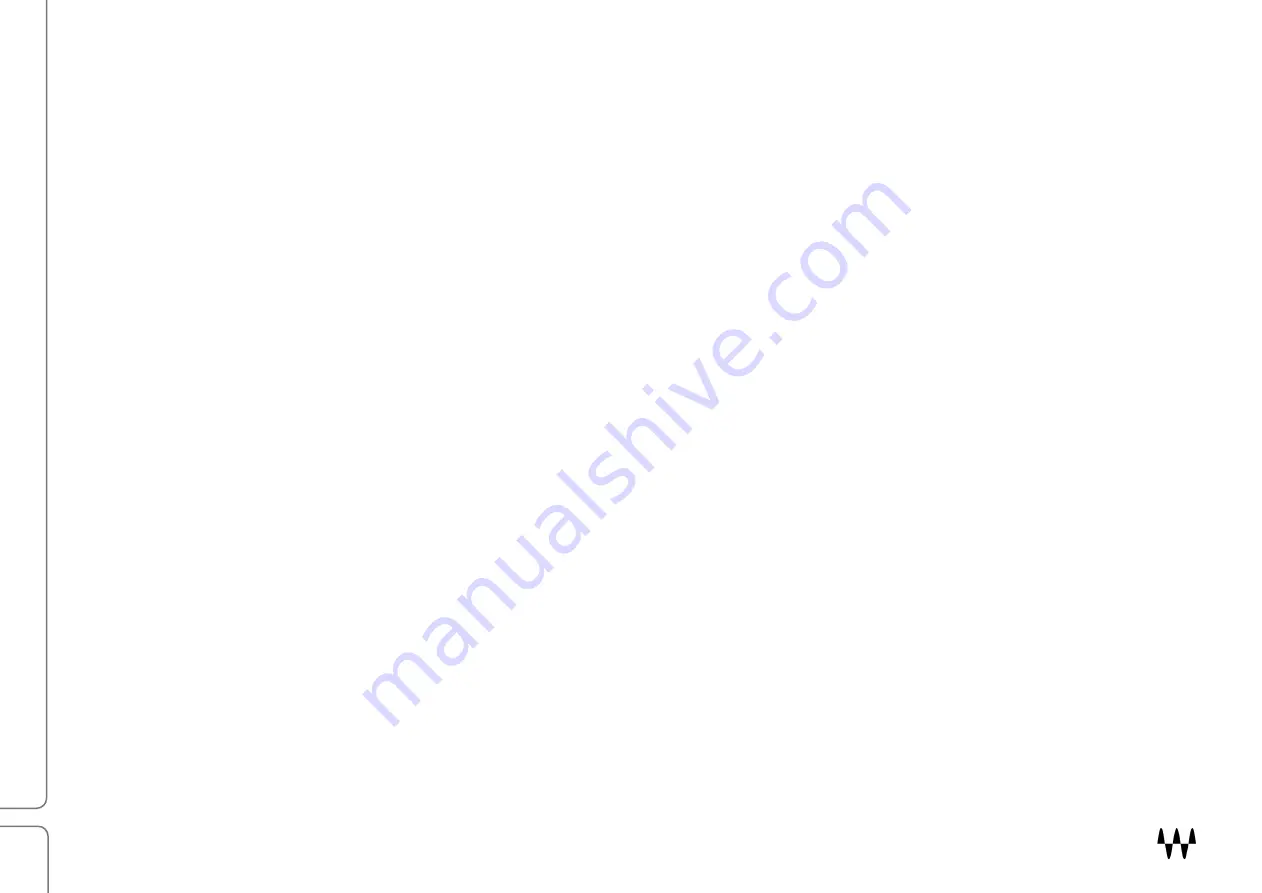
CLA EchoSphere / User Guide
3
Quick Start
S
ET THE INPUT LEVEL
Use the input fader to adjust the gain. The LED above the fader gives you a good indication of how hard you are
hitting the plugin. Green (and even the occasional red) peaks indicate a healthy level. Steady red is too hot.
A
DJUST THE
S
LAP
Touch the Slap fader to focus its control panel. If you’re familiar with slap delays, you won’t find any surprises here.
Adjust the delay time based on tape speed or time. Set how you want EchoSphere to sync with the DAW and adjust
the feedback. High-pass and Low-pass filters help to remove noise.
R
OUTE THE SIGNAL
The Slap output can be routed to the Plate, to the plugin output, or to both. This determines if the Slap and the Plate
are processed in parallel (“Plate” routing off, “Output” on), or in series (“Plate” routing on, “Output” off).
A
DJUST THE
P
LATE
The Plate has three controls: Pre-delay, Reverb time, and low- and high-frequency damping (RT Low and RT High).
M
ODULATE
Modulation is the EchoSphere secret weapon. Even tracks that you don’t want to
sound
modulated will sound
better
with a touch of modulation. The single Modulate knob controls both depth and speed. Each of the four pie-shaped
sections represents a fixed modulation depth. Turn the knob within each section to adjust modulation speed.
A
UDITION AND
A
DJUST
Both effects have locking mutes and solos. The mute status is shown in the Mute panel on the side. If Slap is muted
when it is routed only to Plate, there will be no wet signal. The sends to the Plate and to the Output are adjusted with
the up/down arrows. The Plate output is sent directly to the wet/dry mixer. The large faders set the output level of
each processor. Use the Wet/Dry control to set how much of the effect you want to include in the plugin output.
Summary of Contents for CLA EchoSphere
Page 1: ...CLA EchoSphere User Guide...









